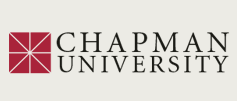Document Type
Article
Publication Date
8-8-2013
Abstract
We demonstrate that quantum instruments can provide a unified operational foundation for quantum theory. Since these instruments directly correspond to laboratory devices, this foundation provides an alternate, more experimentally grounded, perspective from which to understand the elements of the traditional approach.We first show that in principle all measurable probabilities and correlations can be expressed entirely in terms of quantum instruments without the need for conventional quantum states or observables. We then show how these states and observables reappear as derived quantities by conditioning joint detection probabilities on the first or last measurement in a sequence as a preparation or a postselection. Both predictive and retrodictive versions of states and observables appear in this manner, as well as more exotic bidirectional and interdictive states and observables that cannot be easily expressed using the traditional approach. We also revisit the conceptual meaning of the Heisenberg and Schr¨odinger pictures of time evolution as applied to the various derived quantities, illustrate how detector loss can be included naturally, and discuss how the instrumental approach fully generalizes the time-symmetric two-vector approach of Aharonov et al. to any realistic laboratory situation.
Recommended Citation
Dressel, J., Jordan, A.N., 2013. Quantum instruments as a foundation for both states and observables. Physical Review A 88, 022107. doi:10.1103/PhysRevA.88.022107
Peer Reviewed
1
Copyright
American Physical Society

Comments
This article was originally published in Physical Review A, volume 88, in 2013. DOI: 10.1103/PhysRevA.88.022107